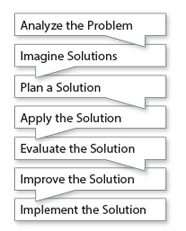Web Site: Robert's Rules of Order
Web Page: Collaboration: Building and Sustaining Trust
Web Page: Mutual Trust, Respect and Safety
Collaboration is fundamentally problem solving in a group. Instead of one person tackling a problem, the group takes on the work of finding a solution. Collaboration involves critical and creative thinking as well as communication.

This chapter outlines the ways in which groups solve problems. Beginning with a discussion of leadership as well as the dynamic roles that other group members play, these pages will take you through the problem-solving process:
The workhorse of collaboration is the group meeting. While many meetings are informal in nature, others are more tightly structured. The end of the chapter provides a quick overview of Robert’s Rules of Order and explains how to take meeting minutes.
For any group to collaborate effectively, members must respect and trust each other as well as share common goals.
Your Turn Think of a group with which you have collaborated. How successful has it been? On a scale of 1 (none) to 5 (total), rate the three key attributes of the group: respect, trust, and goal setting. How did the presence or absence of these attributes impact the group’s effectiveness? Discuss your answers with a classmate.
Web Site: Robert's Rules of Order
Web Page: Collaboration: Building and Sustaining Trust
Web Page: Mutual Trust, Respect and Safety
© 2014 Thoughtful Learning
